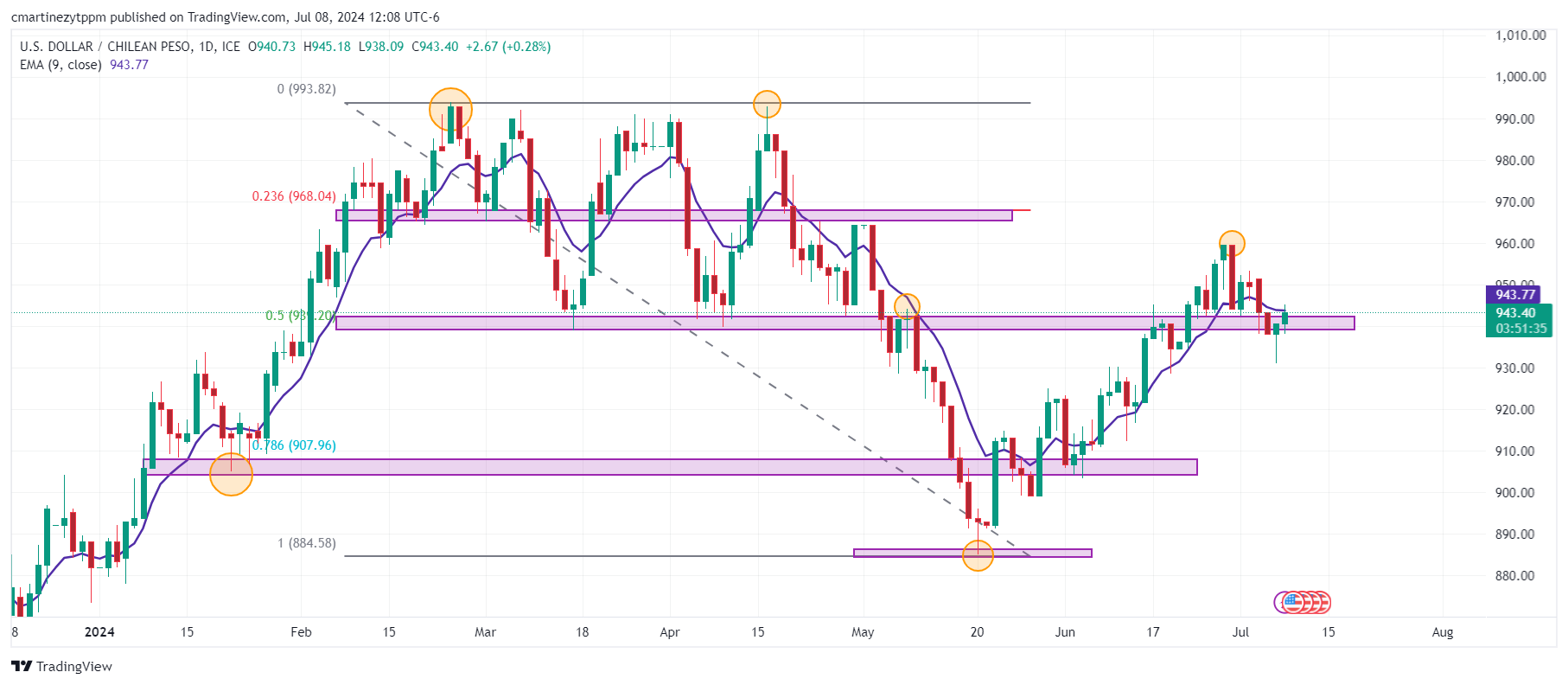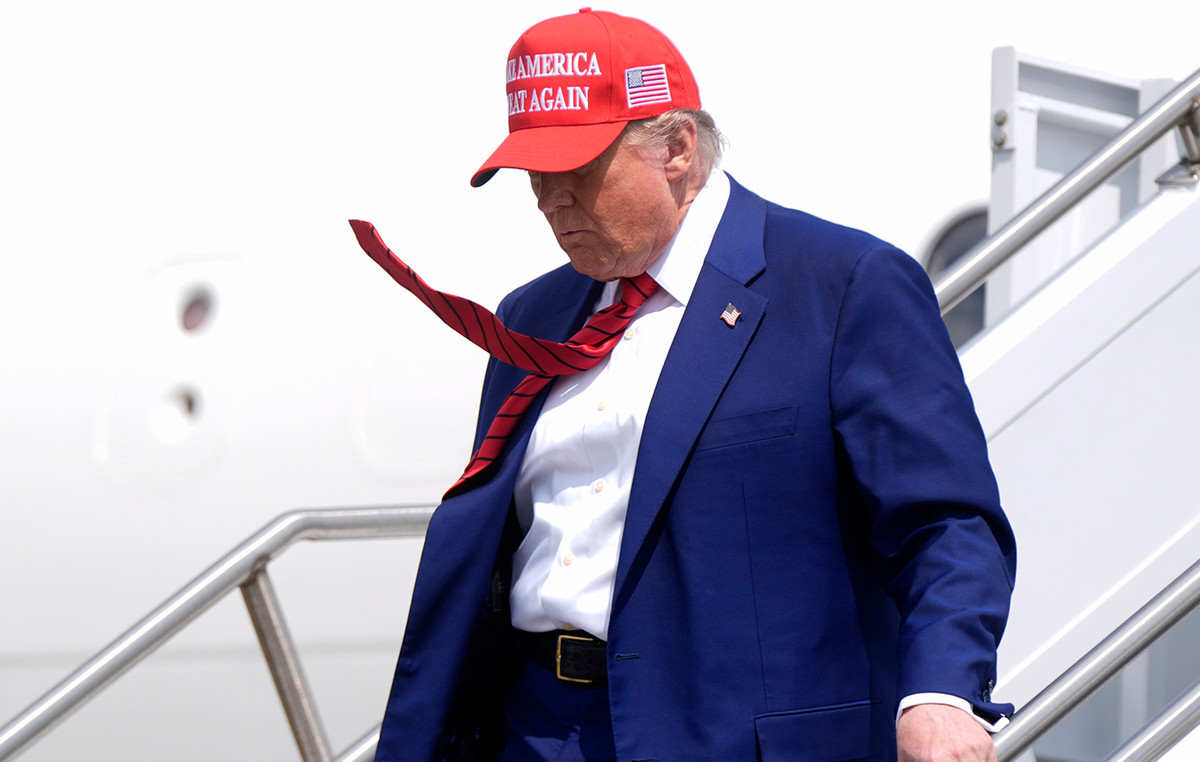- USD/CLP recorded its second consecutive session of gains, gaining 0.38%.
- Chile’s trade balance posted a surplus of $1.99 billion in June, surpassing the previous result of $1.598 billion.
- The Consumer Price Index for June recorded a monthly variation of -0.1% compared to 0.3% in May.
The USD/CLP opened the European session with a session low of 938.09, finding buyers who pushed the pair to a daily high of 945.18. At the end of the American session, the price of the US Dollar against the Chilean Peso is trading at 943.40, gaining 0.28%.
Chile’s CPI records a variation of -0.1 in June to stand at 4.2% over twelve months
In the sixth month of the year, the CPI showed a monthly variation of -0.1%, accumulating 2.4% in the year and 4.2% in twelve months. Among the components that showed price decreases, clothing and footwear stood out, along with household equipment.
The core CPI, which excludes food and energy, showed a monthly variation in June of -0.6% compared to the previous 0.3% in May. This result contributes to the depreciation of the Chilean Peso, fueling the stance that the Central Bank has had since June 2023 by cutting the interest rate.
Chile’s trade balance posted a surplus of $1.99 billion in June, marking its highest level in five months and surpassing the previous reading of $1.598 for May.
Technical levels in the USD/CLP
The USD/CLP is holding on to a support zone located at 940.00, in confluence with the 50% Fibonacci retracement. The next support is located at 905.00, the low of June 5. The nearest resistance is located at 968.00, in convergence with the 23.6% Fibonacci.
Chilean Peso Daily Chart

US Dollar FAQs
The United States Dollar (USD) is the official currency of the United States of America, and the de facto currency of a significant number of other countries where it is in circulation alongside local banknotes. As of 2022, it is the most traded currency in the world, accounting for over 88% of all global foreign exchange transactions, equivalent to an average of $6.6 trillion in daily transactions. Following World War II, the USD took over from the British Pound as the world’s reserve currency.
The single most important factor influencing the value of the US dollar is monetary policy, which is determined by the Federal Reserve (Fed). The Fed has two mandates: to achieve price stability (control inflation) and to promote full employment. Its main tool for achieving these two goals is to adjust interest rates. When prices rise too quickly and inflation exceeds the Fed’s 2% target, the Fed raises rates, which helps the dollar. When inflation falls below 2% or the unemployment rate is too high, the Fed can lower interest rates, which weighs on the dollar.
In extreme situations, the Federal Reserve can also print more dollars and enact quantitative easing (QE). QE is the process by which the Fed substantially increases the flow of credit in a jammed financial system. It is an unconventional policy measure used when credit has dried up because banks are not lending to each other (for fear of counterparty default). It is a last resort when simply lowering interest rates is unlikely to achieve the necessary result. It was the Fed’s weapon of choice to combat the credit crunch that occurred during the Great Financial Crisis of 2008. It involves the Fed printing more dollars and using them to buy US government bonds, primarily from financial institutions. QE typically leads to a weakening of the US dollar.
Quantitative tightening (QT) is the reverse process whereby the Federal Reserve stops buying bonds from financial institutions and does not reinvest the principal of maturing securities in new purchases. It is generally positive for the US dollar.
Source: Fx Street
I am Joshua Winder, a senior-level journalist and editor at World Stock Market. I specialize in covering news related to the stock market and economic trends. With more than 8 years of experience in this field, I have become an expert in financial reporting.







